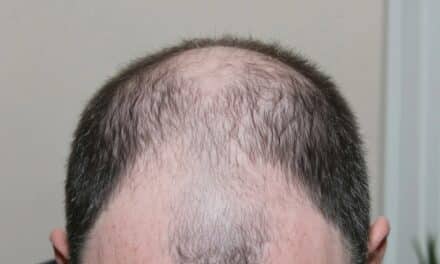Hair loss is a common complaint, capable of causing significant psychological distress. A new study reveals how hair loss might vary by season, which the researchers say could help to assess treatment regimens for the condition. According to the American Hair Loss Association, around two thirds of men in the United States will experience some degree of hair loss by the age of 35. And, by the age of 50, it is estimated that around 85 percent of men in the U.S. will have lost a significant amount of hair.
But contrary to popular belief, hair loss is not just a man’s issue; around 40 percent of hair loss in the U.S. occurs in women. For both sexes, androgenetic alopecia — also known as male or female pattern baldness — is the most common form of hair loss.
In men, this condition is characterized by a receding hairline and thinning on the crown, which may eventually lead to baldness. Women with androgenetic alopecia tend to experience hair thinning all over the head, but it rarely progresses to complete baldness.
Speaking to Medical News Today, study co-author Dr. Shawn Kwatra — from the Department of Dermatology at Johns Hopkins University School of Medicine in Baltimore, MD — said that patients often complain that hair loss is more severe in the summer or the fall.
“We looked through the literature,” added Dr. Kwatra, “and found a few studies that looked at hair trichograms and noted increased shedding in the summer and fall months.”
The Seasonality of Hair Loss
He and his team decided to investigate the association between seasonality and hair loss further by analyzing global data from Google Trends, which is an online database that has collected information on Google search results since 2004.
The researchers recently published their findings in the British Journal of Dermatology.
They looked specifically at monthly search volume index (SVI) data for the term “hair loss” between January 2004 and October 2016.
The team identified the top 15 countries by hair loss SVI. For their final analysis, they selected four countries with the highest populations in each hemisphere. These included the U.S., the United Kingdom, Canada, Australia, India, South Africa, New Zealand, and Mauritius.
The researchers used meteorological definitions to allocate a season to each country, and data on monthly temperatures were gathered using information from the National Oceanic and Atmospheric Administration.
Using the Multivariable Prais-Winsten time series, the team estimated how season influenced hair loss SVI.
The study indicated that hair loss is more common in summer and fall than in winter and spring, supporting previous research and clinical observations.
“What is also interesting is that seasonal variations in hair loss also occurs in animals and has been noted in studies with rhesus monkeys, cats, and dogs. In particular, seasonal flank alopecia has been described in dogs,” Dr. Kwatra told MNT.



